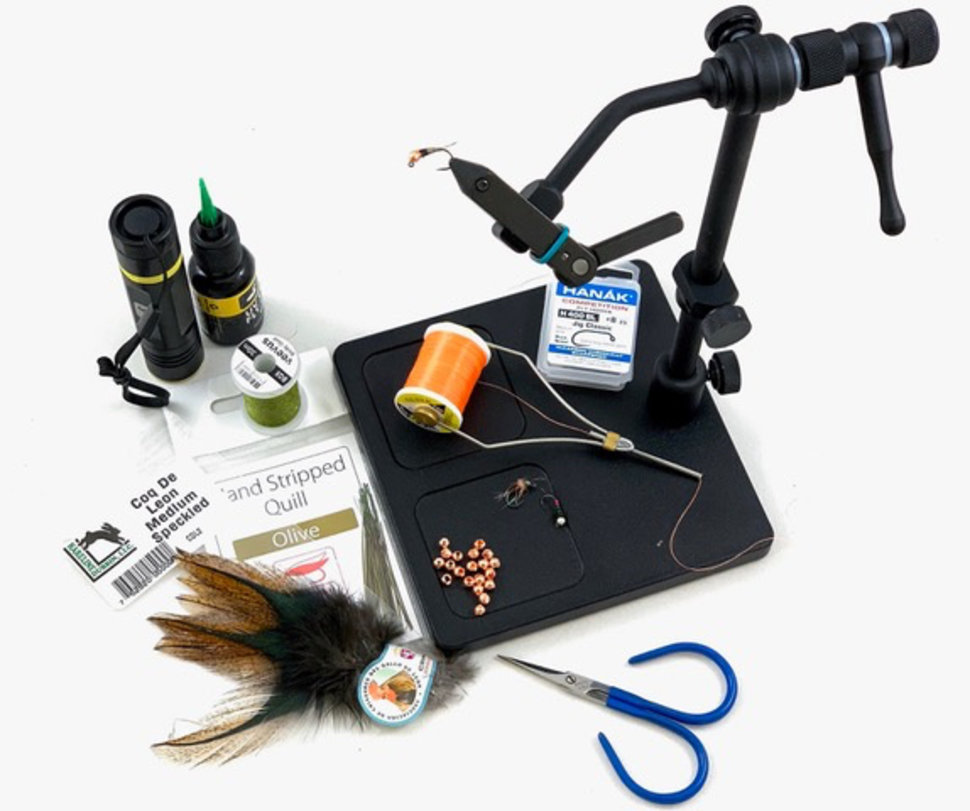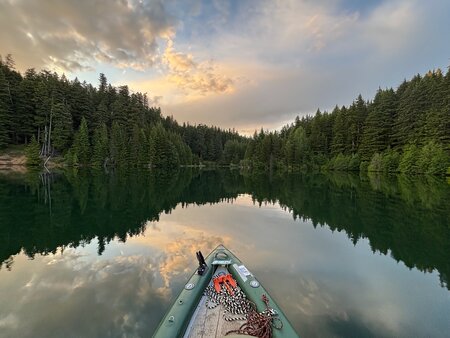5 tips for tying Euro Nymphs

We thought it would be interesting to try and shake things up around here. So our normal column, Fly of the Week, has been replaced with a tips and tricks article this week by Josh Linn. We'll be mixing things up as we go forward, with tying and fishing tips, plus a few product reviews in addition to spotlighting a timely fly pattern. Let us know what you think.
Over the last year tying Euro Nymphs has become very very popular. If you come into the shop or probably any shop you will see a lot of Euro Nymph specific fly tying material, hooks, beads, feathers, floss, UV resin, and the list goes on. It is or can be very difficult to navigate the piles of materials and how to put them on the hook. So I thought it might be interesting to put onto paper some of the things I find or think are important when I tie my Euro Nymphs.
This list is in no particular order.
- Jig hooks- Part of building the best fishing Euro Nymph is using the right hook. We are partial to jig hooks. Jig hooks ride hook point up and for that reason, they hang up on the bottom a lot less. They also have a tendency to hook fish in the top part of the mouth where there is more meat to easily penetrate. We’ve all hooked in the lower lip and probably notice that if the battle goes on for some time that the hook will barely be holding onto a little flap of skin.
- Tungsten beads-Tungsten beads are denser and heavier and sink faster. Quite often we will put a range of beads on the same size of hook and fly to very the weight. A lot of the time when you look in our boxes we might not have a lot of different fly patterns but we will have a lot of sizes and weights. Probably for us where we fish which is mostly the Deschutes and the Metolius we fish size 14 and 16 with mostly 3.8mm, 3.3mm, and 2.8mm sized beads. The 3.8mm and 3.3mm are typically the anchor flies and 3.3mm and the 2.8mm are typically the dropper flies.
- Thin flies sink faster- Classically we tie our flies thick and bushy, quite often with a lot of materials, legs, wings, wing cases, and other things that slow the descent of the fly. The flies that get to the bottom the fastest will fish longer, they will be in the zone longer. Quite often when I am tying I am thinking about what materials are essential to the fly and what I can do away with. One of the biggest struggles I have is how much lead to put on the fly. Lead helps the fly sink by adding weight but it also makes the body thicker so it won’t cut through the water column as fast. As you become more familiar with the flies and the fishing technique you will notice that the Perdigon fly sinks very fast. That fly is very thin and coated with UV resin so it has very little hydrodynamic resistance.
- Tags, tails, hotspots, and collars- If you take a good hard look at a lot of the Euro Nymphs you will notice that a good majority of them have some kind of fluorescent trigger on the fly. A thread hot spot behind the bead, a small collar of bright dubbing, a tag of thread by the tail or a hot colored tail of floss or feather. We use these bright spots to set our flies apart from the other real nymphs in hopes of triggering a strike. The most popular colors are Red, Orange, Pink, and Chartreuse. It takes a little bit to get used to having these triggers of the flies but they do seem to work.
- Confidence flies- You don’t necessarily have to match the hatch- What do these Euro Nymphs represent? When you look at a lot of the fly patterns it becomes pretty evident that they are mostly attractor patterns and don’t specifically imitate one hatch. Profile wise they look like nymphs but that’s probably about where it ends. In the past, we have spent a lot of time trying to match the hatch, but it seems like that might not be the most critical thing at all times. Now, I’m not saying you shouldn’t have some flies that are direct imitations because there are times when matching the Salmonfly or Stonefly hatch, or Caddis on the Deschutes will be a valuable tool. That said, I would bet that 9 out of 10 times the attractor fly will work as good or not better than matching the hatch. Trout are opportunistic and will grab almost any meal that is presented right and is in their zone. I have a few confidence flies that I will tie on before I try anything else, and they work!




